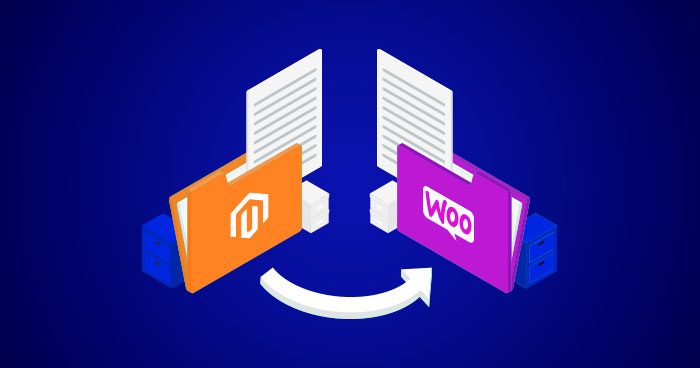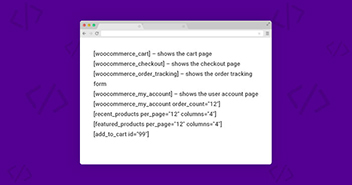
WooCommerce and Magento are two of the most popular CMSes in the eCommerce industry. Compared to WooCommerce, Magento is a more complete solution but it’s not easy to customize or manage, and you would definitely need the help of a professional developer for your Magento store. WooCommerce is powerful but easy to manage and customize which is why it might be the platform.
So if you have a Magento store and want to migrate to WooCommerce, here’s how to do it.
Why Do You Need Magento to WooCommerce Migration?
Magento is an excellent ecommerce platform trusted by thousands of online stores worth millions of dollars. However, managing a Magento store can get overwhelming and unless you are a web developer yourself, you wouldn’t find it easy to customize it.
WooCommerce entered the eCommerce industry in 2011 and since then has gained a lot of popularity mainly because of how easy it is to set up, configure, manage, and customize. In just nine years, WooCommerce became the most-used ecommerce platform According to a BuiltWith report from January 2022, 3,876,748 websites use WooCommerce, which is 0.2% of all websites, and 68,000 of the world’s top million websites, which is 6.8% of the top million websites.
Here are some stats on 2022 eCommerce market share:
- WooCommerce (29%)
- Magento (8%)
The Difficult Migration Process to Magento 2
WooCommerce and Magento are built using different technologies, so the migration process is tricky. You should not attempt the process unless you have extensive experience working with code, servers, and databases. After completing the process, you need to perform extensive testing as well to confirm that everything was migrated correctly and your website design and functionality are unaffected.
If you perform the migration incorrectly, you may lose years of work, including your valuable customer information.
WooCommerce vs. Magento
| WooCommerce | Magento |
|---|---|
| WooCommerce is a completely free platform with an extensive online community for the non-tech inclined | Magento offers a free community version and some premium services but requires basic coding and technical knowledge to run. |
| WooCommerce allows you to add an unlimited number of products. | Magento enables you to add unlimited products by using extensions. |
| WooCommerce provides essential security to protect your store, and utilizes WordPress security as well. | Magento offers advanced security features and dedicated patches to deal with any vulnerabilities. |
| WooCommerce inherits the SEO feature of the WordPress platform and has pretty good SEO capabilities for your store. | Magento has good SEO capabilities and provides many advanced SEO extensions to achieve high search engine ranking. |
If you want to know more about these two ecommerce giants, here’s the detailed comparison of WooCommerce vs. Magento.
WooCommerce is Much More Affordable
WooCommerce is an open-source platform for building a fully-functioning online store, while Magento has two versions – Magento Open Source and Magento Commerce. The open-source version is free but has limited functionality, and the store costs thousands of dollars because Magento recommends hiring a developer to build and maintain your online store.
Magento and WooCommerce both offer extensions and libraries to enhance the functionality of your store. WooCommerce extensions are typically more affordable as compared to Magento.
Endless Flexibility
You can’t customize your Magento store without hiring an expert developer. You need to learn the Magento platform, which is more geared towards developers than non-tech users or business owners.
WooCommerce was designed specifically for small business owners to build up a store with high-level functionality with no coding experience. The WooCommerce installation process is also quite simple. You just need to set up your host and install WordPress and WooCommerce in a few simple steps.
With Cloudways, you can install WooCommerce with just 1-click by using WooCommerce hosting. If you need a pre-built ecommerce store, you can use Cloudways Ecommerce Starter Bundle. This comes pre-loaded with all the right plugins and extensions.
Magento Pros and Cons
| Pros | Cons |
|---|---|
| Open Source: Magento is an open source ecommerce platform solution that could be customized to unique business requirements. | High Cost of Enterprise Version: Magento Enterprise version can get too costly for SMB. |
| Scalability: Magento can be scaled easily to accommodate the increasing number of SKUs. | Resource-intensive Platform: Magento demands a higher volume of server resources. |
| Cost: As I mentioned Magento is open-source, the community version is absolutely free. | Challenges in Finding Developers: Finding good Magento developers is not easy. Magento is an extensive platform and you need a very experienced and talented Magento developer who can maintain and manage the store. |
| Community: Magento has a huge community of users | Hosting: Magento requires a powerful hosting environment and streamlined store management. |
| Payment Options: Magento has the ability to incorporate multiple payment options on your store, in order to facilitate the ease of payment for each and every visitor based on their preferred payment gateway. | Time Requirements: Magento requires a lot of time for regular store maintenance. This time commitment increases when things go wrong and need to be fixed. |
WooCommerce Pros and Cons
| Pros | Cons |
|---|---|
| Open Source: WooCommerce is an open source ecommerce platform that could be customized to fit almost all business scenarios. | Limited Range: WooCommerce has a limited range of free templates and you need to hire a developer for a customized storefront. |
| Free Extensions & Themes: You can leverage the wide range of free WooCommerce plugins and themes to optimize your store according to your requirements. | Paid Extensions: The majority of extensions with powerful features are paid. |
| Easy to Use & Familiar: WordPress supports millions of websites today. Since WooCommerce is a WordPress plugin, users can easily figure out how to use it. | Hosting: WooCommerce does not come with a native hosting solution and you need to pay extra for it. |
| Secure: WooCommerce is really secure with regular updates that plug security vulnerabilities. | |
| Community Support: Community is one of the reasons WooCommerce is a leading ecommerce platform. There are millions of people who can give you free advice for your store. |
Migrating from Magento to WooCommerce
Now let’s move on to the actual migration process. To demonstrate the process, I hosted a dummy Magento store on Cloudways.
Launch a Magento Store
To launch a Magento store, I will use the Cloudways managed hosting platform that offers simplified application deployment. You can launch any PHP-based application including WordPress, WooCommerce, and Magento in just a click.
Since I already have a Cloudways account, I am going to directly login but if you don’t, you need to sign up for a FREE 3 -day trial.

Next, I am going to launch a Magento application on my Cloudways managed server.

For this, I simply selected Magento from the dropdown menu and clicked the Add Application button.
Next, I am going to select the application that I have launched to find my application credentials.

In the Application Management screen, you can see the application credentials:

Now I am going to log into the Magento admin dashboard using the credentials.

Adding Products
Now that I am logged in, I will add some products to better simulate the process.
Go to the Catalog tab and select the Products option from the menu.

In the Manage Products screen, you can see the list of the products already uploaded to the store.
 Next, on the right side, you can see the Add Product tab.
Next, on the right side, you can see the Add Product tab.
After clicking the tab, you will see the Product Type option where you choose the type of products (such as simple products or grouped products). In my case, I will choose Simple Products.

In the next step, I am going to add product details (title, description, price, etc). Also, when you scroll down the page, you will find entry options for images, metadata, inventory, category, etc that you can explore as well.

Now that the Magento store is ready, I am going to move on to the migration process.
Using cart2cart Tool for Migration
Migrating your Magento store to WooCommerce is easy and you don’t need any particularly detailed knowledge to carry out the process. You just need a tool such as Cart2Cart which allows you to easily migrate your Magento store to the WooCommerce platform.
Features of Cart2Cart
Cart2Cart has several features that make it one of the best plugins for migrating your Magento store to the WooCommerce platform.
- Technical Support
- No Technical Skills Required
- Automated Processes
- Fast and Affordable
- Free Demo Migration
- Secure & Scalable
- No Data Loss or Duplication
- No Software to Install
- Plenty of Tutorials and FAQs
Making the jump from Magento to WooCommerce?
Let an expert take care of your migration
Things To Do Before The Migration
Before you initiate the migration process, here are two things you need to do to ensure a smooth migration
- Backup the Magento store
- Make sure the WooCommerce store is ready
Starting With the Migration Process
In this section, I am going to start the migration process of the Magento store to WooCommerce.
Step 1: Register for Free on Cart2Cart
Visit the Cart2Cart website and register either using your email address or via Google or Facebook.

Step 2: Start The Free Demo
After you have signed in, you can see two options.
- Follow the migration wizard
- Let Cart2Cart Team do the migration for you
I am going to follow the first option and use the migration wizard
Click the Start Free Demo button.

Step 3: Provide Shopping Cart Detail
You can see two sets of dropdown menus. In the first set, select Magento with URL in the first one and WooCommerce with admin URL, and login credentials in the second dropdown menu.

Next, click Choose Entities.
Step 4: Select Entities for Migration
Select the entities for migration. In my case, I am going to select all of the entities.

It will take some time for the migration process to finish. Once the migration is completed, you will see the message Demo Migration has been successfully completed.

You can check the result by clicking CHECK THE RESULTS.

As you can see, all the data from the Magento store has now been migrated to the WooCommerce store including all the product images, names, descriptions, prices, and SKU.
Summary
I hope you understand the process of migrating from Magento to WooCommerce and see how tools can simplify the process. If you have any questions, please let me know in the comments section below.
Saud Razzak
Saud is the WordPress Community Manager at Cloudways - A Managed WooCommerce Hosting Platform. Saud is responsible for creating buzz, spread knowledge, and educate the people about WordPress in the Community around the globe. In his free time, he likes to play cricket and learn new things on the Internet. You can email him at [email protected]


